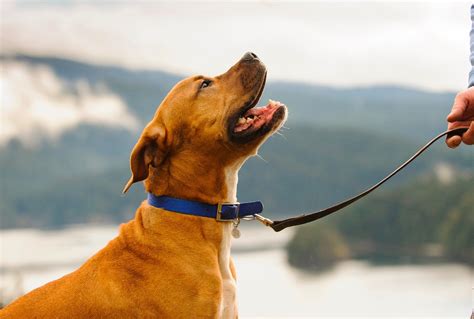Bringing a new furry friend into your home can be an exciting and rewarding experience. However, ensuring that your pup is well-behaved and obedient requires the right training. But with so many dog trainers out there, how do you choose the perfect match for your pup? In this blog post, we will explore the importance of dog training and how to identify your training needs. We’ll also delve into the different types of dog training methods and the qualities to look for in a dog trainer. Additionally, we’ll discuss the importance of researching local dog trainers, reading reviews and testimonials, and interviewing potential dog trainers. And finally, we’ll explore the importance of observing a training session before making a decision. By the end of this post, you’ll feel confident in choosing the right dog trainer to help your pup become the best-behaved dog they can be.
Importance of Dog Training
Dog training is an essential aspect of responsible pet ownership, as it not only enhances the relationship between the owner and the dog but also ensures the safety and well-being of the animal. Without proper training, dogs can exhibit undesirable behaviors such as aggression, excessive barking, and destructive chewing, which can pose a risk to both the dog and the people around them.
Moreover, training allows for better communication between the owner and the dog, which is crucial for a harmonious living environment. It enables the dog to understand and respond to commands, making it easier to manage them in various situations such as walking in public areas, interacting with other pets, or being in crowded spaces.
Furthermore, training helps to stimulate the dog both mentally and physically, preventing boredom and reducing the likelihood of developing anxiety-related behaviors. It also instills discipline, making them more obedient and less likely to engage in dangerous activities or run into hazardous situations.
Overall, the importance of dog training cannot be overstated, as it contributes to the overall well-being of the dog and fosters a positive and fulfilling bond between the owner and their pet.
Identifying Your Training Needs
When considering dog training, it’s important to start by identifying your specific training needs. Each dog is unique and may require different training approaches, so it’s essential to assess what your dog needs in order to be successful.
One way to identify your training needs is to consider your dog‘s behavior and any specific issues that need to be addressed. For example, if your dog has behavioral issues such as aggression or anxiety, you may need to focus on behavioral training techniques. On the other hand, if your dog simply needs basic obedience training, you may opt for a more general obedience training program.
Additionally, consider your own training goals and preferences. Are you looking for one-on-one training or would you prefer a group class setting? Do you have the time and resources to dedicate to a rigorous training program, or do you need a more flexible training schedule? These factors will help you determine the type of training program that will best suit you and your dog‘s needs.
By taking the time to identify your specific training needs, you can ensure that you find the right training approach for you and your dog, setting you both up for success.
Types of Dog Training Methods
When it comes to training your dog, there are various methods that you can choose from, each with its own unique approach and philosophy. Positive reinforcement is a popular method that involves rewarding your dog for good behavior, such as giving treats or praise. This method focuses on reinforcing the positive behavior rather than punishing the negative. It is based on the principle that dogs will repeat behaviors that result in a positive outcome.
On the other hand, clicker training is a method that uses a small device called a clicker to communicate with your dog. When your dog performs a desired behavior, you use the clicker to make a distinct sound, followed by a treat or praise. This method is effective for teaching new behaviors or refining existing ones.
Alpha dog training is another method that is based on the idea of establishing yourself as the pack leader. This approach emphasizes the need for the owner to assert dominance over the dog to control their behavior. However, it is important to note that this method has been the subject of controversy and criticism from animal behavior experts.
Lastly, electronic training involves the use of electronic collars to deliver a shock or vibration to your dog when they exhibit unwanted behavior. While this method can be effective in some cases, it is important to use it with caution and under the guidance of a professional.
Qualities to Look for in a Dog Trainer
When searching for a dog trainer, it’s important to consider the qualities that make a trainer effective and reliable. One of the most crucial qualities to look for in a dog trainer is their experience and expertise in working with a variety of breeds and behavior issues. A well-rounded trainer will have a deep understanding of dog behavior and psychology, as well as the knowledge and skills to address specific training needs.
Another important quality to consider is the trainer’s ability to communicate effectively with both the dog and the owner. Clear and concise communication is essential for the success of any training program, and a good trainer will be able to convey instructions and feedback in a way that is easily understood by both the dog and the owner.
Additionally, a dog trainer should possess patience, empathy, and a genuine love for animals. Training can be challenging and require a lot of time and effort, so a trainer who is patient and understanding can make the process much smoother for both the dog and the owner. A trainer who truly cares about the well-being and success of their clients’ pets will go above and beyond to ensure a positive and enriching training experience.
Lastly, look for a trainer who stays updated on the latest training techniques and methodologies. The world of dog training is constantly evolving, and a great trainer will continue to educate themselves and adapt their approach to ensure the best possible results for their clients.
Researching Local Dog Trainers
When it comes to finding the right dog trainer for your furry friend, conducting thorough research is crucial. You want to ensure that you are choosing a trainer who is not only knowledgeable and experienced but also aligns with your training philosophy.
Start by asking for recommendations from friends, family, and your veterinarian. Word of mouth is a powerful tool in finding reputable dog trainers in your local area. Additionally, consider reaching out to local dog clubs or rescue organizations for referrals.
Once you have a list of potential dog trainers, take the time to thoroughly research each one. Look into their background, credentials, and training methods. It’s important to find a trainer who uses positive reinforcement techniques and has a strong understanding of dog behavior.
Read reviews and testimonials from previous clients to get a sense of their experiences. This can provide valuable insight into the trainer’s approach and success rate. Make sure to also inquire about their availability, location, and fees to ensure they are a practical fit for you and your dog’s needs. By taking the time to research local dog trainers, you can feel confident in finding the right fit for your canine companion.
Reading Reviews and Testimonials
When you are in the process of finding a dog trainer, it is essential to do thorough research. One of the key steps in this process is reading reviews and testimonials from past clients. These can provide valuable insight into the experiences others have had with a particular trainer, giving you a better idea of what to expect.
When reading reviews and testimonials, it is important to look for patterns and common themes. Pay attention to recurring positive comments about a trainer’s methods, communication style, and ability to connect with both the dog and the owner. On the flip side, take note of any consistent negative feedback, as this could be a red flag.
Additionally, reading reviews and testimonials can help you gauge a trainer’s success rate. Look for specific examples of how a trainer’s methods have helped improve a dog’s behavior, obedience, and overall well-being. Hearing about real-life outcomes from other dog owners can be reassuring when making your decision.
It is also beneficial to seek out reviews and testimonials from a variety of sources, such as the trainer’s website, social media pages, and third-party review platforms. This can give you a more comprehensive understanding of a trainer’s reputation and track record.
Interviewing Potential Dog Trainers
When it comes to finding the right dog trainer for your furry friend, it’s important to do your due diligence. One crucial step in the process is interviewing potential dog trainers to ensure they are the right fit for your dog’s needs.
During the interview, ask about the trainer’s experience and background. Inquire about their certifications and any specialized training they may have. It’s also important to discuss their training philosophy and methods to ensure they align with your beliefs and goals for your dog.
Additionally, observe how the trainer interacts with your dog during the interview. Pay attention to how they handle your dog, communicate with them, and assess their behavior. This will give you a good sense of the trainer’s skills and rapport with your dog.
Finally, request references from the trainer and follow up with previous clients to gain insight into their experiences. Reading reviews and testimonials can also provide valuable information about the trainer’s reputation and successes with other dogs.
Observing a Training Session
When choosing a dog trainer, it is important to not only interview potential trainers and research their credentials, but also to observe a training session. This can give you a firsthand look at the trainer’s methods, the way they interact with your dog, and the overall atmosphere of the training environment.
During the observation, pay attention to how the trainer communicates with the dogs. Are they using positive reinforcement and rewards, or are they resorting to punishment and harsh techniques? It is crucial to ensure that the training methods align with your beliefs and the well-being of your dog.
Additionally, consider the dynamics between the trainer and the dogs. Is there a sense of trust and respect, or does the trainer appear to be intimidating or aggressive? Observing a training session will allow you to gauge the trainer’s demeanor and whether it fosters a positive learning environment for your dog.
Lastly, take note of how the dogs are responding to the training. Are they engaged and eager to participate, or do they seem fearful and stressed? These observations will give you insight into the effectiveness of the trainer’s methods and whether they are able to connect with the dogs in a meaningful way.





